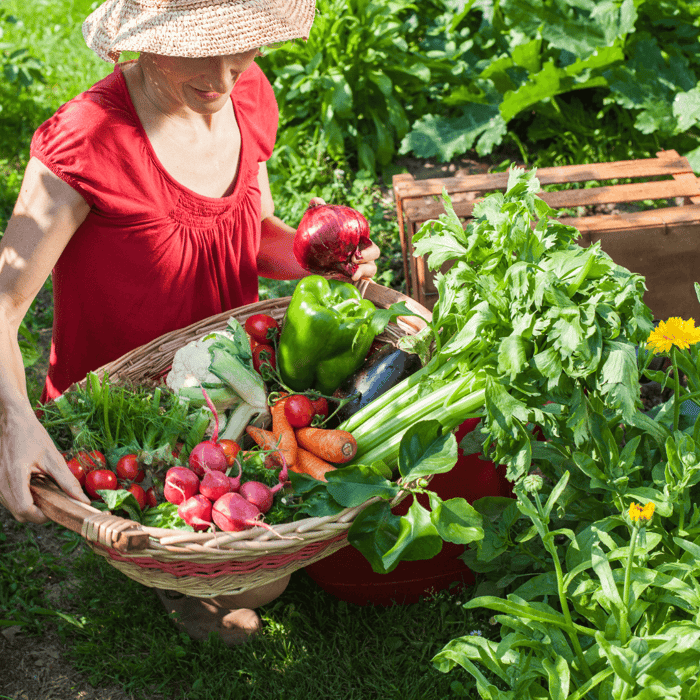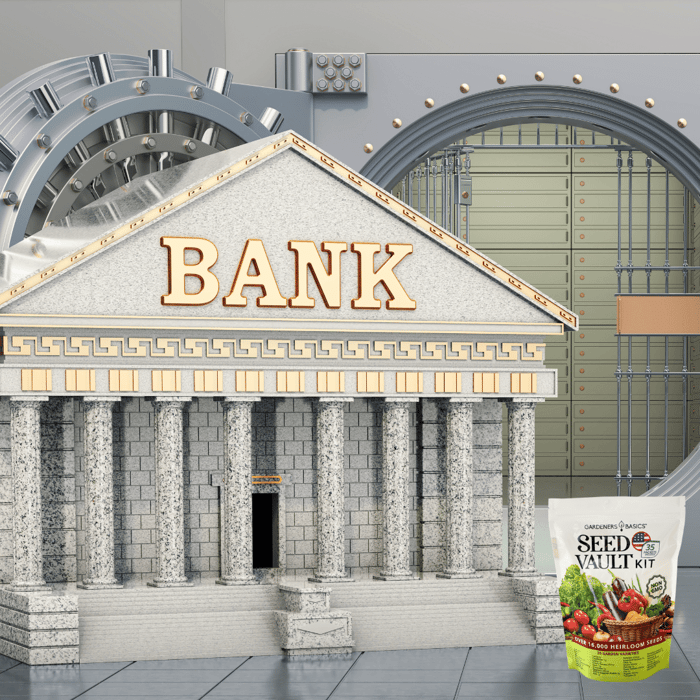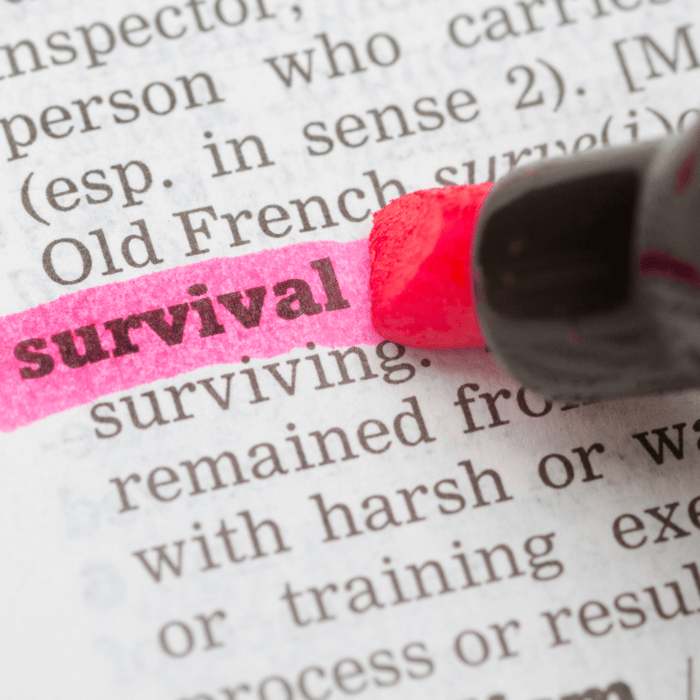Hi there, I'm Jeena, an avid gardener who understands the importance of being prepared for any situation. In this in-depth article, I will walk you through the process of storing seeds for survival. Whether you're an experienced gardener or a beginner, this step-by-step guide will help you create your survival seed bank. Let's dive into the world of seed storage and discover how to store seeds for survival for years, ensuring that you have reliable food sources during unforeseen circumstances.
1. Selecting the Right Seeds for Your Survival Garden
The first step in creating a survival seed bank is carefully selecting the seeds you want to store. When choosing seeds, consider the following:
-
Heirloom seeds: Opt for heirloom seeds, as they are open-pollinated and can be saved and replanted year after year, ensuring a consistent food supply. These seeds are also known for their flavor and nutritional value, making them an excellent choice for your survival garden.
-
Vegetable seed varieties: Focus on vegetable seeds that are high-yielding, nutritious, and adaptable to your local climate. It's essential to consider factors such as growing seasons, soil conditions, and pest resistance when selecting seeds. Including a diverse range of plant varieties will help ensure your garden can provide a balanced diet.
-
Germination rate: Look for seeds with a high germination rate, ensuring a better chance of successful growth. Remember that seeds naturally lose their viability over time, so purchasing and storing fresh seeds properly is crucial to maximizing their lifespan.
2. Organizing and Labeling Your Seed Packets
Once you've collected seeds for your survival garden, it's crucial to properly organize and label them. This will make it easier to find specific seeds when you need them. Here's how to do it:
-
Sort by type: Separate your seeds into categories, such as leafy greens, root vegetables, and fruiting plants. Organizing your seeds by type will make planning your garden layout and inventory management easier.
-
Label seed packets: Clearly label each seed packet with the plant name, variety, and collection date or purchase date. Include any additional information, such as planting instructions or special care notes. Proper labeling will help prevent confusion and ensure that you plant the right seeds at the appropriate times.
3. Preparing Seeds for Long-Term Storage
Before storing heirloom seeds, you must ensure they are properly prepared for long-term storage. Follow these steps to prepare your seeds:
-
Dry seeds thoroughly: Seeds should be completely dry before storing. Place them on a paper towel in a cool, dry area for a few days to ensure all moisture is removed. Drying seeds properly is critical, as residual moisture can lead to mold growth and spoilage.
-
Check for damage or mold: Inspect the seeds for any signs of damage or mold. Discard any seeds that appear compromised, as they may not germinate properly. Taking the time to sort through your seeds and remove any that are not suitable for storage will help improve the overall quality of your seed bank.
4. Choosing the Right Containers for Seed Storage
Selecting the appropriate container is crucial for storing seeds for long-term storage. There are several options to choose from, including:
-
Glass jars: Glass jars, such as mason jars, are an excellent option because they are airtight and protect seeds from moisture and pests. Also, glass jars are reusable, making them an environmentally friendly choice for seed storage.
-
Mylar bags: Mylar bags are another suitable choice for seed storage, as they are light-proof and can be sealed airtight with a vacuum seal. These bags are specifically designed to protect sensitive items from damage caused by exposure to light, air, and moisture, making them perfect for seed preservation.
- Plastic containers: Opt for food-grade plastic containers with tight-fitting lids, but ensure they are kept in a cool, dark place to protect the seeds from light exposure. These containers are affordable and widely available, making them a practical choice for seed storage.
5. Proper Seed Storage Conditions
To maintain the viability of your seeds, you must store them in the right conditions. Here are the key factors to consider when storing seeds:
-
Temperature: Store seeds at room temperature or cooler. Fluctuations in temperature can damage seeds, so aim for a consistent temperature. Seeds should be stored in a temperature-controlled environment like a basement, root cellar, or refrigerator.
-
Humidity: Keep seeds in a cool, dry environment, as moisture can lead to mold growth and spoilage. To further reduce the risk of moisture damage, consider using a dehumidifier in the storage area or incorporating moisture-absorbing materials like silica gel packets.
-
Light: Store seeds in a cool, dark place, as light can reduce their viability over time. Exposure to light can trigger germination or cause seeds to lose their dormancy, making it essential to store seeds in a dark environment to preserve their longevity.
6. Using Oxygen Absorbers and Desiccants for Seed Storage
Oxygen absorbers and desiccants can help prolong the life of your stored seeds by removing excess moisture and oxygen from the storage environment. Follow these steps to properly use oxygen absorbers and desiccants:
-
Oxygen absorbers: Place an oxygen absorber in each seed container before sealing it. This will help remove any remaining oxygen and protect the seeds from oxidation. Reducing the oxygen levels in the container can also help prevent insect infestations, as many pests require oxygen to survive.
-
Desiccants: Add a desiccant packet, such as silica gel, to each seed container to absorb moisture and maintain a dry environment. Be careful not to let the desiccant come into direct contact with the seeds, which can cause damage. Desiccants can be especially beneficial in humid climates or during periods of high humidity.
A word of caution on oxygen absorbers. Although it is common practice to use oxygen absorbers, some people feel that it removes the oxygen from the seeds and makes them unviable. I'm not sure if there is for sure any research one way or the other. We do not ship seeds with oxygen absorbers in our survival seed kits, so it's up to you if you want to add one. We don't have our seeds at home, but we know others who do.
7. Regularly Testing Seed Viability
To ensure that your stored seeds remain viable, it's essential to test their germination rate periodically. This can be done using a simple paper towel test. Here's how:
- Moisten a paper towel and fold it in half.
- Place a small number of seeds (approximately 10) on one half of the paper towel, leaving space between each seed.
- Fold the other half of the paper towel over the seeds, ensuring they are fully covered.
- Place the folded paper towel inside a plastic bag or container and seal it to maintain moisture.
- Keep the container in a warm area and check on the seeds daily for signs of germination.
- Make sure the paper towel remains moist during this time too.
- After approximately 1-2 weeks (it could be a little longer, depending on the seed variety), count the number of seeds that have germinated and calculate the germination rate by dividing the number of germinated seeds by the total number of seeds tested.
Testing seed viability is essential to maintaining a survival seed bank, as it allows you to identify any issues with seed storage conditions or seed quality. You can take corrective action by monitoring the germination rate, such as adjusting storage conditions or replacing seeds, as needed.
 8. Rotating Your Seed Stock
8. Rotating Your Seed Stock
Rotating your seed stock is essential to ensure you always have a fresh supply of viable seeds. To do this, use the oldest seeds in your collection first and replenish your stock with new seeds each year. This practice will help maintain your survival seed bank's overall quality and viability. Additionally, rotating your seed stock allows you to evaluate the performance of different plant varieties and adjust your seed selection based on your needs and preferences.
When replenishing your seed stock, consider the following:
-
Saving seeds from your garden: If you're growing heirloom or open-pollinated plants, you can save seeds from your garden to add to your seed bank. This saves money and helps you preserve seeds that have adapted to your specific growing conditions.
-
Purchasing seeds from reputable sources: When buying new seeds, purchase them from reputable suppliers to ensure high-quality, viable seeds. Look for companies specializing in heirloom or open-pollinated seeds, as these seeds are ideal for long-term storage and survival gardens. We offer all heirloom vegetable and herb varieties at Gardeners Basics. Most come in a mylar bag already ready for storage.
By following these steps and guidelines, you can create a well-organized, long-lasting survival seed bank that will provide you with a reliable food source in times of crisis. Remember, proper seed selection, storage conditions, and regular testing are crucial for maintaining the viability of your seeds. With some planning and effort, you'll be well on your way to cultivating a bountiful survival garden that can sustain you and your family through challenging times. Now that you know how to store seeds for survival, will you be saving and storing your seeds in case of an emergency?







